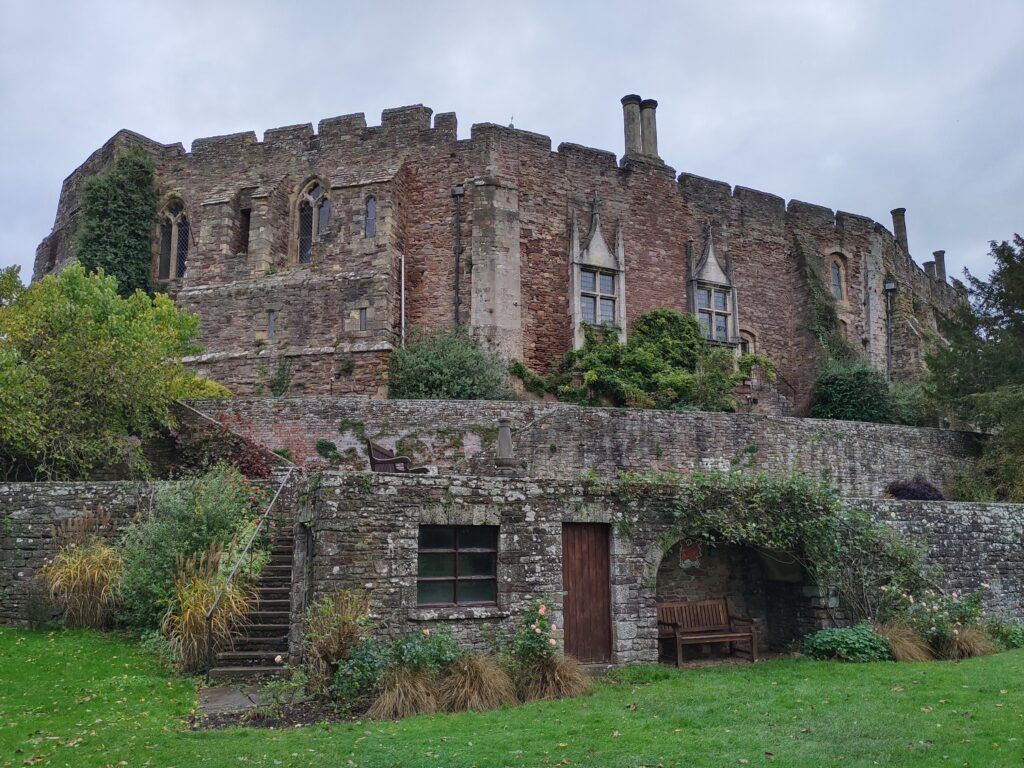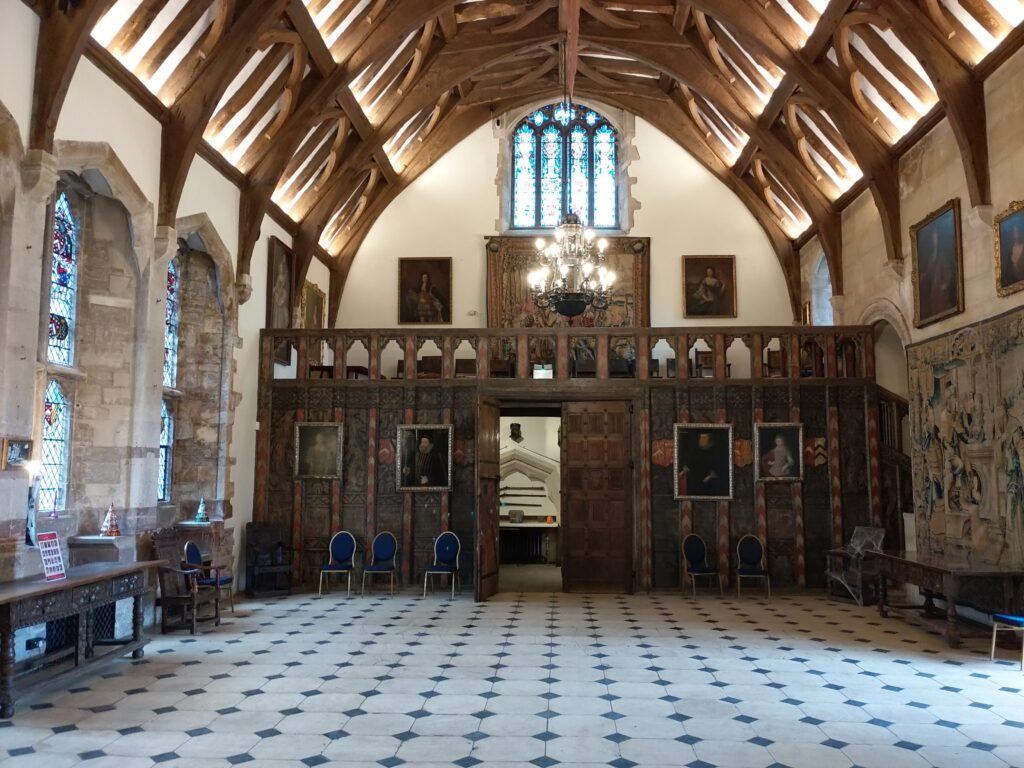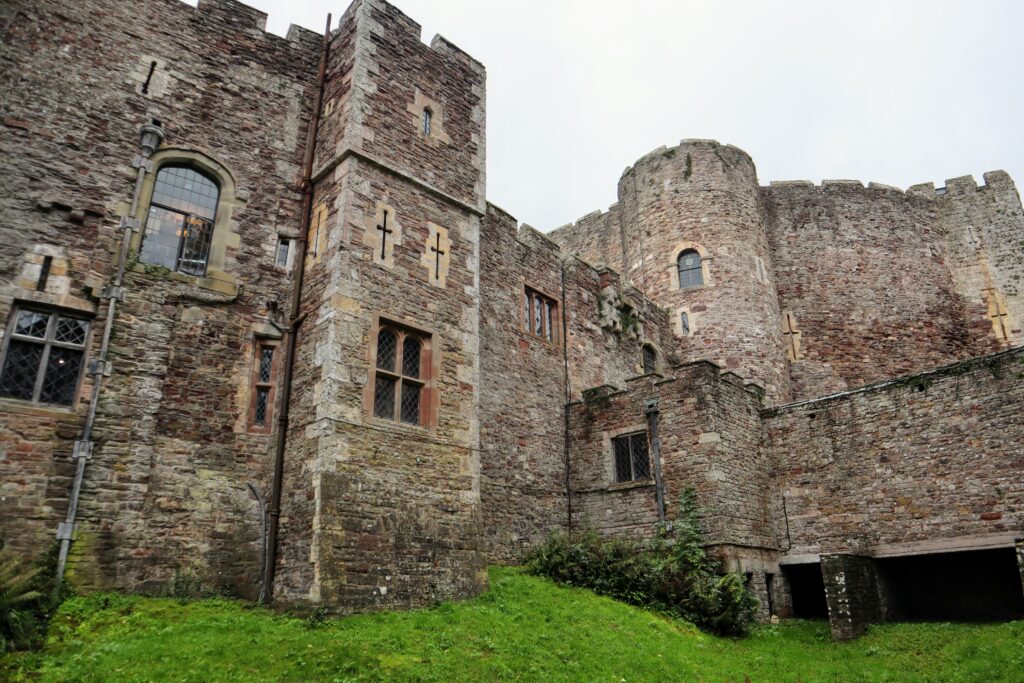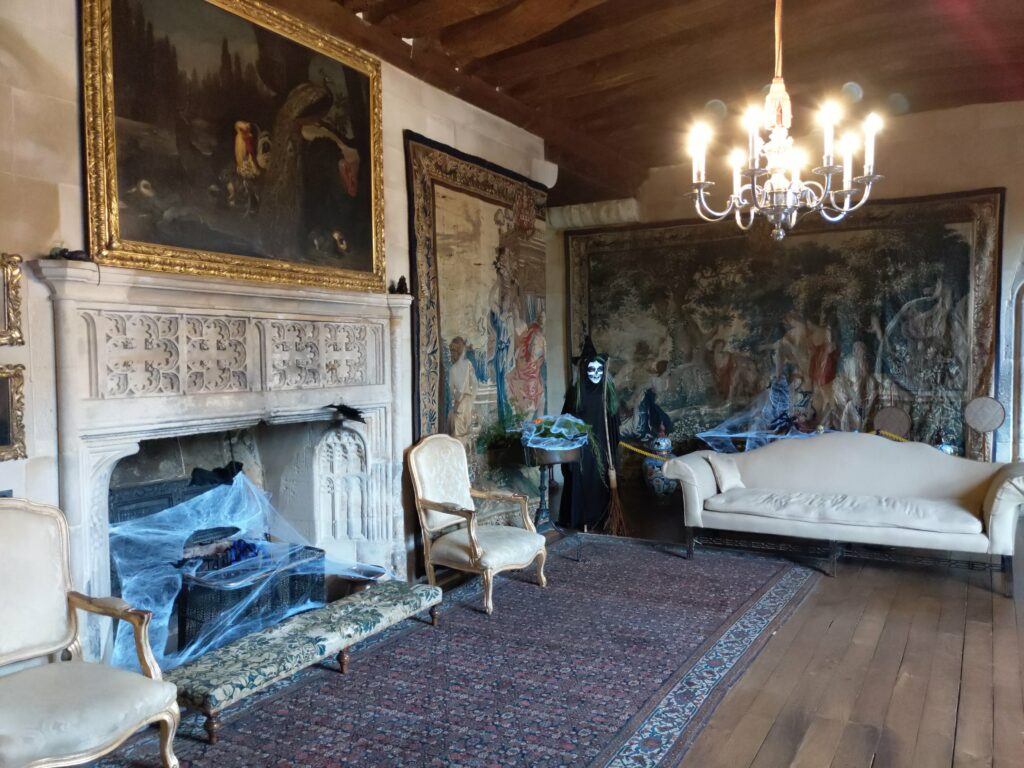Berkeley Castle is a truly remarkable castle! The castle’s origins date back to the 11th century and the Berkeley family are lucky enough to have called it home for nine centuries (well except for a few hiccups along the way). The castle has survived numerous battles and has many intriguing and sometimes murderous tales to tell. The castle remains in pristine condition, both inside and out (mostly), with wonderful historical collections inside on view. Although still in private ownership the castle is open to the public to visit.
| Built | 11th Century |
| Type | Motte-and-Bailey |
| Condition | Intact (See notes further down) |
| Ownership | Private – Berkeley Family |
| Access | Public (on certain days) – Fee |
Click here to watch our video on the history of Berkeley Castle
Early Days
Shortly after the Norman Conquest, in about 1067 a timber framed motte-and-bailey castle was built on the site by William FitzOsbern. After William the castle was held by three generations of the de Berkeley family (all named Roger de Berkeley).
At the time of the Anarchy (1135-1153), a civil war over the succession of the crown between Empress Matilda and King Stephen, Roger supported Matilda. Stephen’s forces came and besieged Berkeley Castle. Roger was captured and hung in chains outside the walls to try and force the castle’s troops to surrender. Their attempts failed, but Roger was dragged away in chains (although survived). After the anarchy was settled, Stephen granted Berkeley Castle to Robert Fitzharding.

During the mid to late 12th century, Robert rebuilt Berkeley Castle in stone and added a circular shell keep with five protruding towers and a curtain wall. Robert’s son, Maurice married Roger de Berkeley’s daughter, Alice, and Maurice took the de Berkeley name continuing the dynasty.
During the First Barons’ War (1215-1217), the de Berkeley’s supported the Barons over King John. Berkeley Castle was apparently the meeting place that the barons chose to host a meeting of the West Country Barons before they set out to seal the Magna Carta. King John refused to accept and abide by the Magna Carta and he seized Berkeley Castle. The castle was later returned to Thomas de Berkeley although the family continued to oppose the crown throughout the Second Barons’ War (1264-1267).


Murder of a King
The murder of King Edward II has secured Berkeley Castle’s place in notable history. In 1326 the castle was ransacked by a favourite of Edward II, Hugh le Despenser. Soon after, Edward II’s estranged wife, Queen Isabella and her ally Roger Mortimer ousted Edward.
Initially Edward was held at Corfe Castle, but the local people sympathised with Edward so he was moved to Berkeley. Supporters of Edward once even managed to breach the castle walls and rescue him, but not for long as he was soon recaptured and returned to the Castle. Soon after his re-imprisonment at the castle Edward was murdered in 1327 (although there are conspiracy theories to this day that Edward actually escaped and another was murdered in his place). The most common and rather gruesome tales of Edward II’s murder sugests he dies from either a red hot poker inserted into his anus or by suffocation.
Following Edwards murder, Roger Mortimer and and the castle’s owner, Thomas de Berkeley were charged with murder. Roger was executed but Thomas was acquitted as apparently he was not at the castle when the murder occurred.
Time goes on..and so does construction
In the mid 14th century the castle received an extensive makeover from Thomas de Berkeley. At the north of the keep, Thorpes Tower was constructed, an inner gatehouse to the southwest and various buildings within the inner bailey.
In 1492 the castle took another break from being in the de Berkeley’s hands. Following various family disputes over the castle, the then castle’s owner, William de Berkeley gave the entire estate of Berkeley to King Henry VII in return for various titles, including being made Earl Marshall of the realm. The castle was returned to Henry Lord Berkeley family in 1553 after King Edward VI died childless.

Civil War
During the English Civil War (1642–1651) the castle had passed down to George de Berkeley who supported the Royalist side. George garrisoned the castle and rightly so as the castle was attacked and taken by the Parliamentarians. During the Civil War conflict the castle changed hands five times. In 1645, Parliamentary forces led by Colonel Thomas Rainsborough lay siege on the castle. The Parliamentarians fired a cannon at point blank range at the adjacent church of Saint Mary the Virgin, blowing its roof straight off. This certainly shook the garrisoned troops inside the castle and they hastily surrendered.
At the end of the war, George Lord Berkeley was allowed to retain ownership of the castle under the rule that he breached the keep wall and never repaired the keep or outer bailey of the castle.

Modern Times
In the 1920’s and 1930’s the 5th Earl of Berkeley installed electricity and plumbing into the castle for comfort and also a Clock Tower.
The castle is still intact and behind its doors lies an historic and grand interior to explore, including – The King’s Gallery, Dining Room, Picture Gallery, Tower Room, Medieval Larders, Buttery, Kitchen, Great Hall, Armoury, Grand Staircase, Morning Room, two Drawing Rooms and Beer Cellar. Berkeley Castle is still the home of the Berkeley family but the castle with it’s grand interiors and gardens are open to the public to enjoy, tickets can be purchased on the castle’s website.

A Few More Interesting Points
A certain playwright and poet called William Shakespeare wrote the famous Midsummer Night’s Dream for the wedding of Sir Thomas Berkely (1575-1611).
The last court jester in England, Dickie Pearce, dies at the castle after falling from the Minstrells’ gallery.
The castle was used for scenes in the 2003 film “The Other Boleyn Girl” and was used in the 2017 television series “Who Do You Think You Are” when actress Courtney Cox discovered she is a 21-generation direct descendant of Thomas de Berkeley.

Click here to read about our visit to Berkeley Castle
Visiting Berkeley Castle
The castle is open to the public to book and visit at certain times of year and on certain days. Check out their website for more details https://www.berkeley-castle.com/
Address: Berkeley Castle, Gloucestershire, GL13 9BQ
Click below to watch our video on the history of Berkeley Castle


Wow! Over a thousand years old, and still operational! And the history of Berkeley Castle is incredible. Think of all the historic events the Berkley family must have experienced over the course of a century. Can you imagine being there when Shakespeare visited and got his inspiration for Midsummer Night’s Dream? It’s amazing the castle is still in excellent condition, with a number of historical artifacts and collections to see. I think it’s pretty cool that the owners still open Berkley Castle to the public.
Indeed it is a very unique place with so much history and intrigue. Exploring the Castle is incredible (see our blog post on visit Berkeley Castle here https://castlesandlegends.com/…)
Imagine the tales this Castle could tell, if only walls could talk!
I actually am a “castle and ruins” – nerd, I just love to stroll around them, imagining how life must have been during the middle-ages and such. Berkeley castle, however, is new to me and one of these days I would love to visit it on my trips to England! Thank you for telling me something about its history!
Hi Lizzy
Oh wonderful to hear you are a “castle and ruins” nerd just as I am 🙂 It is quite amazing to look upon these wonderful historical landmarks and imagine how things once were.
I have also wrote a blog post about my visit to Berkeley if you would like to find out about what is was like to visit here https://castlesandlegends.com/…
This place seems like it could have many stories behind it. I have never heard of it before this but it does carry a lot of intrigue. It must take a lot to maintain its style and form. Those walls are so old and the architecture is amazing. Thanks for the introduction. I might just include it in my next tour to Europe.